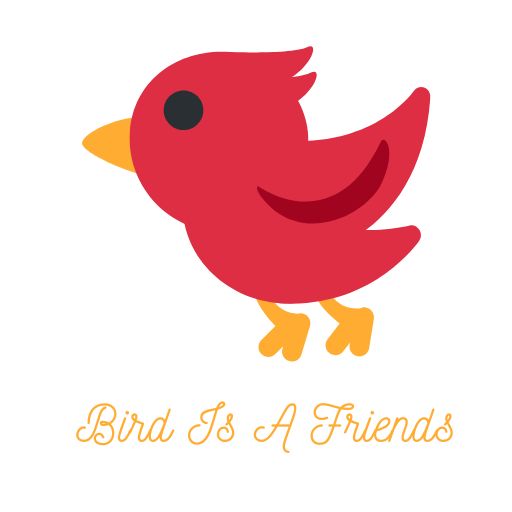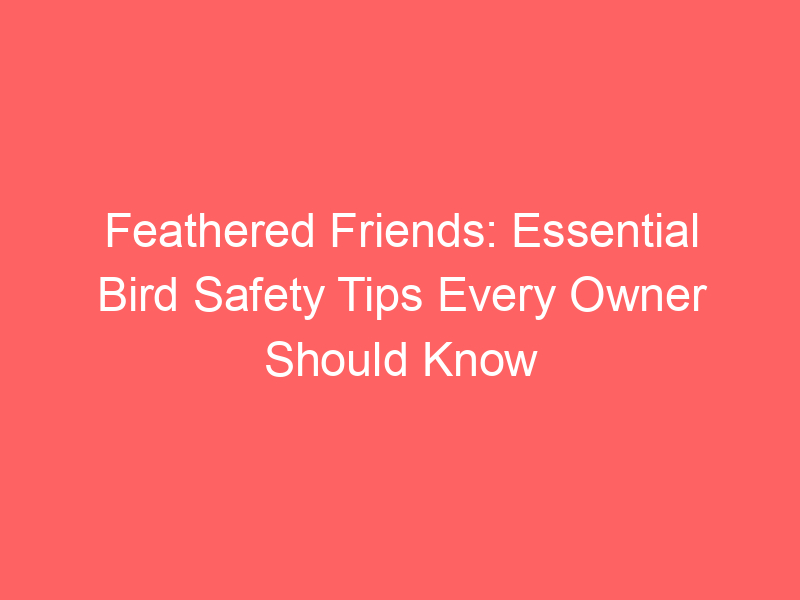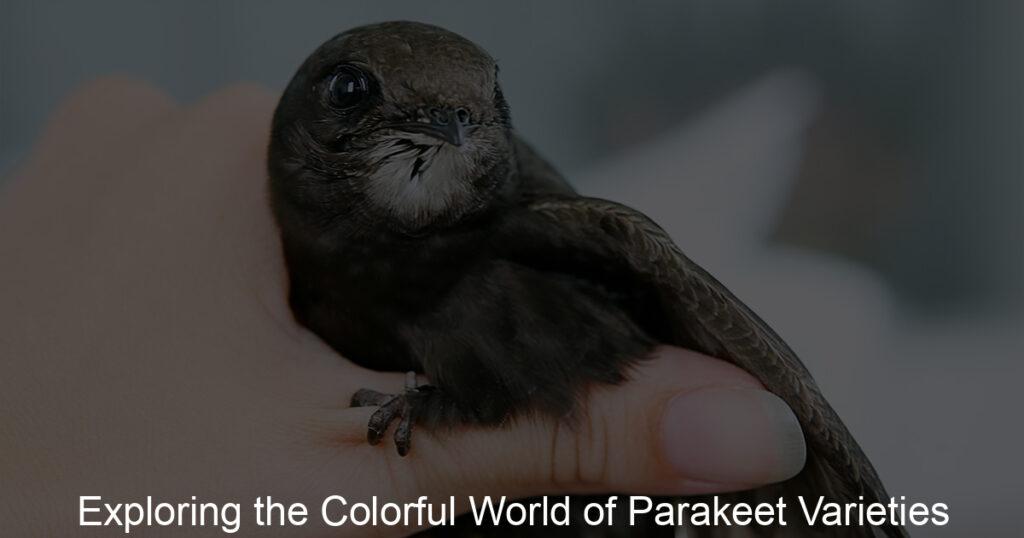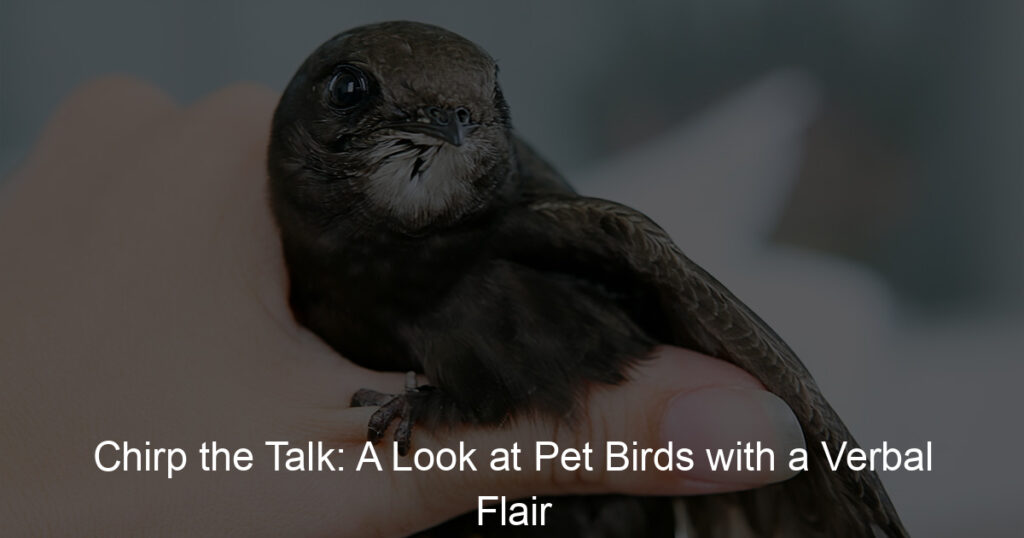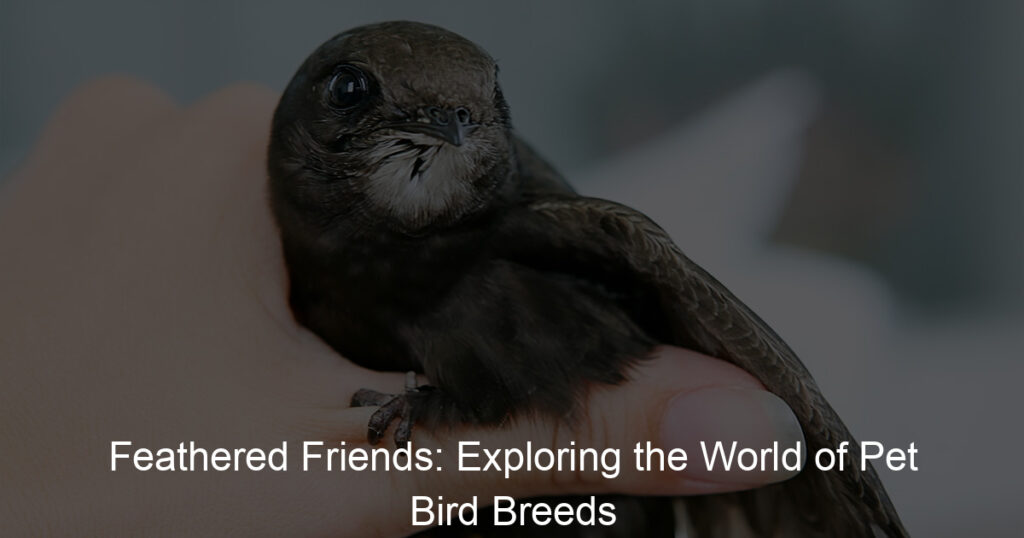
Introduction to Bird Safety
When it comes to our feathered friends, safety is paramount. Birds, whether they are pets or wild, require certain precautions to ensure their well-being. This article aims to shed light on the importance of bird safety and understanding bird behavior for safety.
- The Importance of Bird Safety
- Understanding Bird Behavior for Safety
Ensuring bird safety is not just about protecting the birds; it’s about maintaining the balance of our ecosystem. Birds play a crucial role in our environment. They help control pests, pollinate plants, and disperse seeds. If their safety is compromised, it could disrupt these natural processes and have a ripple effect on other species and the environment as a whole.
For pet birds, safety is equally important. Birds are delicate creatures and can easily get injured or sick if not properly cared for. Ensuring their safety means providing them with a safe and comfortable living environment, feeding them a balanced diet, and taking them for regular vet check-ups. It also means protecting them from common household hazards like toxic fumes, sharp objects, and other pets.
Understanding bird behavior is key to ensuring their safety. Birds communicate through their behavior. For example, a bird that is fluffed up, lethargic, or not eating may be sick. A bird that is squawking loudly or biting may be stressed or scared. By observing and understanding these behaviors, we can take appropriate actions to ensure their safety.
It’s also important to understand that different species of birds have different behaviors and needs. For example, some birds are social and need companionship, while others prefer to be alone. Some birds need a lot of space to fly around, while others are content in a smaller cage. Understanding these differences can help us provide the right care and environment for each bird.
Bird Safety Tips: A Comprehensive Guide
Ensuring the safety of our feathered friends is a top priority for bird owners and enthusiasts. This guide will provide you with essential bird care guidelines that will help you keep your bird safe and healthy.
Essential Bird Care Guidelines
There are three fundamental aspects of bird care that every bird owner should be aware of:
- Proper feeding and nutrition
- Regular health check-ups
- Safe bird handling practices
Just like humans, birds require a balanced diet to stay healthy. This means providing a variety of foods, including seeds, fruits, vegetables, and bird-specific pellets. Remember, not all human food is safe for birds. For instance, avocados and chocolate can be harmful to them.
Regular visits to a vet who specializes in birds are crucial. Birds are good at hiding illness, so routine check-ups can help detect any health issues early. A typical check-up might include weight monitoring, beak and feather examination, and blood tests.
Handling your bird correctly is vital to their safety. Always use gentle, calm movements to avoid frightening your bird. Never squeeze or hold your bird too tightly. Also, remember to wash your hands before and after handling your bird to prevent the spread of germs.
By following these guidelines, you can ensure your bird lives a long, happy, and healthy life. Remember, bird safety is a lifelong commitment and requires consistent effort and care.
Bird Owner’s Guide to Safe Environments
As a bird owner, creating a safe environment for your feathered friend is of utmost importance. This involves making both your home and outdoor environments bird-friendly. Let’s explore how you can achieve this.
- Creating a bird-friendly habitat at home
Creating a bird-friendly habitat at home is not as complicated as it might seem. It involves a few simple steps:
- Choose the right cage: The cage should be spacious enough for your bird to move around comfortably. It should also be made of safe, non-toxic materials.
- Provide toys and perches: Birds need mental stimulation. Toys and perches can help keep them entertained and active.
- Ensure proper lighting: Birds need a certain amount of light each day for their health. Make sure your bird’s cage is in a well-lit area, but not in direct sunlight.
- Maintain a safe temperature: Birds are sensitive to temperature changes. Keep the room temperature consistent and comfortable for your bird.
- Ensuring bird safety in outdoor environments
When it comes to outdoor environments, there are a few key considerations to keep in mind:
- Supervise outdoor time: Never leave your bird outside unsupervised. Predators, weather conditions, and other hazards can pose a risk.
- Use a bird harness: If you want to take your bird outside, a bird harness can help keep them safe and secure.
- Provide shelter: If your bird spends time outside, make sure they have access to shelter from the sun, wind, and rain.
Remember, the safety of your bird should always be your top priority. By following these guidelines, you can create a safe and comfortable environment for your bird both at home and outdoors.
Bird Safety Precactions: Avoiding Common Hazards
In our journey to ensure bird safety, it is crucial to understand the common hazards that birds face and how to avoid them. This section will focus on bird protection measures against predators.
Bird Protection Measures Against Predators
Predators pose a significant threat to birds, both in the wild and in our homes. To protect our feathered friends, we need to identify potential threats and implement protective measures.
- Identifying Potential Threats
- Implementing Protective Measures
Identifying potential threats is the first step in bird protection. Predators can be other larger birds, cats, dogs, or even humans. In the wild, birds face threats from eagles, hawks, and snakes. In urban areas, domestic pets and traffic are common dangers. It’s essential to be aware of these threats to take the necessary precautions.
Once we have identified the potential threats, we can take steps to protect our birds. For pet birds, ensure they are housed in a secure cage that cannot be easily opened or broken into. If you have outdoor birds, consider installing birdhouses high up in trees where predators cannot easily reach. For wild birds, you can support conservation efforts to preserve their natural habitats.
In conclusion, bird safety is a responsibility we all share. By identifying potential threats and implementing protective measures, we can help ensure the safety and well-being of our feathered friends.
Safe Bird Handling: Reducing Stress and Injury
When it comes to bird safety, how we handle our feathered friends can significantly impact their health and well-being. Improper handling can lead to stress and injury. Therefore, it’s crucial to understand the right techniques and recognize when a bird is under stress.
-
Proper Handling Techniques
Handling a bird correctly is essential to prevent causing harm. Always approach birds slowly and calmly to avoid startling them. When picking up a bird, use a gentle but firm grip, ensuring not to squeeze too tightly. Support their body and feet at all times to make them feel secure.
Remember, birds are not toys. They should never be tossed, swung around, or handled roughly. Always supervise children when they are interacting with birds to ensure they handle them gently and respectfully.
-
Understanding Bird Stress Signals
Just like humans, birds can experience stress. However, they show it in different ways. Some common stress signals in birds include loss of appetite, excessive preening or feather plucking, changes in droppings, and unusual aggression or fearfulness.
If you notice any of these signs, it’s essential to take steps to reduce your bird’s stress. This could involve adjusting their environment, changing their diet, or consulting with a vet. Remember, a stressed bird is not a happy bird, and prolonged stress can lead to serious health problems.
In conclusion, safe bird handling involves proper techniques and understanding bird stress signals. By following these guidelines, you can ensure your bird stays healthy and happy.
Bird Safety for Pet Owners: Special Considerations
As a bird owner, it’s crucial to understand the special considerations that come with ensuring the safety and well-being of your feathered friend. This section will focus on the daily routines that contribute to bird safety.
Bird Care 101: Daily Routines
Establishing a daily routine is essential for your bird’s health and happiness. This routine should include maintaining a clean habitat and ensuring regular exercise and mental stimulation. Let’s delve into these aspects in detail:
- Maintaining a clean habitat
- Ensuring regular exercise and mental stimulation
Keeping your bird’s habitat clean is a fundamental aspect of bird care. This involves regular cleaning of the cage, perches, and toys. It’s recommended to clean the cage daily to prevent the buildup of droppings and leftover food, which can lead to bacterial growth and diseases. Additionally, a weekly deep clean with bird-safe disinfectants can help maintain a hygienic environment for your pet.
Just like humans, birds need regular exercise for their physical health. This can be achieved through flying in a safe, enclosed space or climbing on bird gyms. Mental stimulation is equally important and can be provided through interactive toys and puzzles. Spending quality time with your bird, teaching them new tricks, and allowing them to explore new objects can also contribute to their mental well-being.
In conclusion, maintaining a clean habitat and ensuring regular exercise and mental stimulation are key daily routines that every bird owner should follow. These practices not only contribute to the bird’s physical health but also their mental well-being, leading to a happier and healthier pet.
Guidelines for Bird Safety Around Children and Other Pets
When it comes to bird safety, children and other pets in the household can pose unique challenges. Here are some guidelines to ensure a safe environment for everyone.
- Teaching Children About Bird Safety
- Explain that birds are not toys: They are living creatures that need to be treated with respect and care.
- Teach them to be gentle: Birds have fragile bones and can easily be injured by rough handling.
- Supervise interactions: Always supervise when your child is interacting with the bird to ensure they are treating it properly.
- Introducing Birds to Other Pets
- Keep them separated at first: Allow your pets to get used to the bird’s presence without direct contact.
- Monitor their interactions: Always supervise their interactions to prevent any aggressive behavior.
- Train your pets: Teach your other pets to respect the bird’s space and not to see it as a toy or prey.
Children can be naturally curious and may not understand that birds are delicate creatures. It’s important to teach them about bird safety from a young age. Here are some tips:
Introducing a bird to other pets in the household can be a tricky process. Here are some steps to make the introduction smoother:
Remember, bird safety is a continuous process. It requires patience, understanding, and a commitment to creating a safe environment for your feathery friend.
Ensuring Bird Safety at Home: Advanced Tips
When it comes to bird safety, it’s essential to be proactive. By identifying potential hazards and implementing safety measures, you can prevent accidents and injuries. Here are some advanced tips to ensure your feathered friend’s safety at home.
Preventing Accidents and Injuries
Preventing accidents and injuries is a crucial aspect of bird safety. It involves two main steps: identifying common household hazards and implementing safety measures.
- Identifying Common Household Hazards
- Implementing Safety Measures
Many everyday items can pose a risk to birds. These include open windows and doors, ceiling fans, toxic plants, and household chemicals. Even simple things like hot stovetops or a pot of boiling water can be dangerous. It’s important to be aware of these hazards and take steps to mitigate them.
Once you’ve identified potential hazards, the next step is to implement safety measures. This could involve securing windows and doors, turning off ceiling fans when your bird is out of its cage, keeping toxic plants out of reach, and storing household chemicals safely. Regularly checking your home for new hazards is also a good practice.
Remember, prevention is always better than cure. By being vigilant and proactive, you can ensure a safe and happy environment for your bird.
| Common Household Hazards | Safety Measures |
|---|---|
| Open windows and doors | Secure windows and doors |
| Ceiling fans | Turn off when bird is out of cage |
| Toxic plants | Keep out of bird’s reach |
| Household chemicals | Store safely away from bird |
By following these advanced tips, you can ensure your bird’s safety at home. Remember, a safe bird is a happy bird!
Emergency Preparedness: What to Do in a Crisis
When it comes to bird safety, being prepared for emergencies is crucial. In this section, we will discuss how to create a bird first-aid kit and understand when to seek veterinary care.
- Creating a Bird First-Aid Kit
- Understanding When to Seek Veterinary Care
A bird first-aid kit is a vital tool in any bird owner’s home. It should contain essential items like tweezers for removing foreign objects, a small towel for handling your bird, saline solution for cleaning wounds, and a heating pad to keep your bird warm in case of shock. Remember, a first-aid kit is not a substitute for veterinary care, but it can help stabilize your bird until you can get professional help.
It’s important to know when your bird needs professional medical attention. Signs of illness in birds can be subtle, but there are a few key indicators to watch for. These include changes in eating or drinking habits, unusual droppings, difficulty breathing, and signs of distress like feather plucking or lethargy. If you notice any of these signs, it’s time to seek veterinary care. Remember, it’s always better to be safe than sorry when it comes to your bird’s health.
In conclusion, being prepared for emergencies is a key part of ensuring bird safety at home. By creating a bird first-aid kit and understanding when to seek veterinary care, you can help ensure your bird’s health and wellbeing in any situation.
| Emergency Preparedness Items | Description |
|---|---|
| Bird First-Aid Kit | A collection of essential items to help stabilize your bird in an emergency. |
| Understanding When to Seek Veterinary Care | Knowing the signs of illness in your bird and when to seek professional help. |
Conclusion: The Lifelong Commitment to Bird Safety
As we draw this comprehensive guide to a close, it’s important to remember that bird safety is not a one-time effort. It is a lifelong commitment that requires continuous learning and adaptation. Let’s revisit some key points and discuss how we can continue to promote bird safety in our everyday lives.
- Revisiting the importance of bird safety
- Encouraging continuous learning and adaptation
From our initial introduction to bird safety, we’ve explored various tips and precautions to ensure the well-being of these delicate creatures. Birds, whether they are pets or wild, play a significant role in our ecosystem. They help control pests, pollinate plants, and even act as indicators of environmental health. Therefore, ensuring their safety is not just a matter of personal responsibility but also a contribution to maintaining the balance of our ecosystem.
As we’ve seen, bird safety is a vast field with many aspects to consider. From understanding their behavior to creating a safe environment at home, each step requires knowledge and care. However, the learning doesn’t stop here. As new research emerges and our understanding of birds deepens, it’s crucial to stay updated and adapt our practices accordingly.
For instance, a recent study may reveal a new type of food that’s harmful to birds, or a new product may be launched that enhances bird safety at home. Staying informed about these developments and incorporating them into our bird safety practices is a lifelong commitment that we should all strive to make.
In conclusion, bird safety is a journey, not a destination. It’s about making small, consistent efforts that add up to create a safe and nurturing environment for our feathered friends. So, let’s continue on this path of learning, adapting, and ensuring bird safety for a healthier and happier world.
